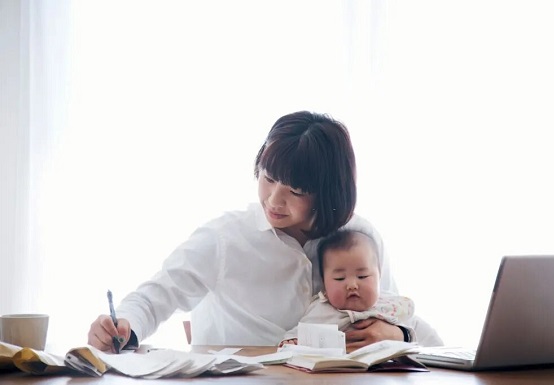Getting on the First Solid Food

At one point when a mum breastfeeds, she will wonder when the baby can take food from a source outside of her breasts. The phase to transition the baby to his or her first solid food is called weaning and is a cradle of uncertainty for many new parents. Sarah Shamila, the manager of Nutrition and Dietetic Services, steps up to provide some advice on this subject.
THE RIGHT TIME TO WEAN
One of the major questions new parents will ask is when should they wean a baby. Taking a leaf from the advice given by the World Health Organisation, Sarah says, “All infants should start receiving food, on top of breast milk, from six months onwards. This means the process is gradual, not cutting off breast milk from the baby’s diet but slowly transitioning him or her to new sources of nourishment.”
Aiding the search for the right time are the signs of readiness a baby will display to indicate weaning is apt. This includes demanding more feedings; sitting upright in a highchair and swallowing well; chewing on his fingers, knuckles and feet; holding his or her stead well in an upright position; and drooling less as he or she can move food to the back of the mouth to swallow.
Another easy sign to look out for is when your baby loses the extrusion reflex, which happens when he or she tries to push food out of the mouth. When a combination of the above signs starts to appear, you can be sure you can begin the weaning process.
GRADUAL IS CORRECT
Babies are often not used to sudden changes, so sometimes it may be hard to predict how your child will react to weaning. Going at a slow, comfortable pace will help ease his or her anxiety, if any, and increase receptivity. When you wean your child, you will realise a loss of and miss the intimacy that comes with breastfeeding. But you can compensate it with attention or other emotional activities such as snuggling and playing together to retain that intimacy.
With this pace, you will be able to watch out for and ensure the complementary and new sources of nourishment can cover the nutritional needs of your child. Sarah is strict on this aspect, saying, “Weaning should be adequate. The complementary food should be given at the amount, frequency, consistency and variety to sustain the child’s healthy development.” Lastly, by keeping weaning gradual, you can also protect your breast from painful engorgement as there is a build-up of milk and other fluids in your breast tissue from decreased breastfeeding frequency.
A QUICK GUIDE
Some of the challenges you can expect, according to Sarah, are “a baby’s level of food acceptance, how to manage messy meal times, complicated by the addition of new food sources, and achieving the right consistency”. So what can you do about it? While there is no one-size-fits-all method of introducing your baby to solid food, as a start, Sarah recommends iron-fortified plain rice cereals as an ideal first food for your baby.
Sarah also says, “Start off with a small quantity of food. Add a little of your baby’s milk, be it breast or formula, to mix the food and keep the taste familiar. After that, offer one food at a time, allowing three to four days between each introduction of new food to the baby’s diet. Check for the baby’s response, adapting the intervals when necessary. When you have gone through this for a while, you can start to establish a routine for weaning.”
During the weaning, you may notice your baby becoming attached to his or her security blanket or starting to suck his or her thumb. Do not overthink or try to stop it as these are comforting habits the baby picks up to cope with the emotional changes of weaning. To help, sometimes you can delay or lengthen the process of weaning when your baby is adapting to or confronting other changes. For example, when your baby has just started childcare, it may not be the best time to wean as he or she may not respond well to multiple changes.
ADDRESSING A MISCONCEPTION
One of the common misconceptions associated with early weaning is that it helps the baby grow up faster and that the benefits of breastfeeding end in the first few months of infancy. Neither is true. Rather many paediatricians have recommended that breastfeeding should continue till the baby is at least one-year-old.
Some have even found benefits in extended breastfeeding, where the baby is fed breast milk till he or she is more than 24 months old. The reason is, the nutritive value of breast milk, such as protein, calcium and vitamins, continues to enrich the child’s development and boost his or her immune system. The amazing thing is, the benefits seem to be cumulative, favouring extended breastfeeding.
Ultimately, while there is a general guideline, there is no right-or-wrong approach. When to start weaning and completely stop breastfeeding is a personal decision, governed by how your baby reacts to the transition. When in doubt, you can always discuss this with your doctor and seek the best approach forward.
This article is taken from our My Alvernia Magazine Issue #30. Click here to read the issue on our website or on Magzter.



